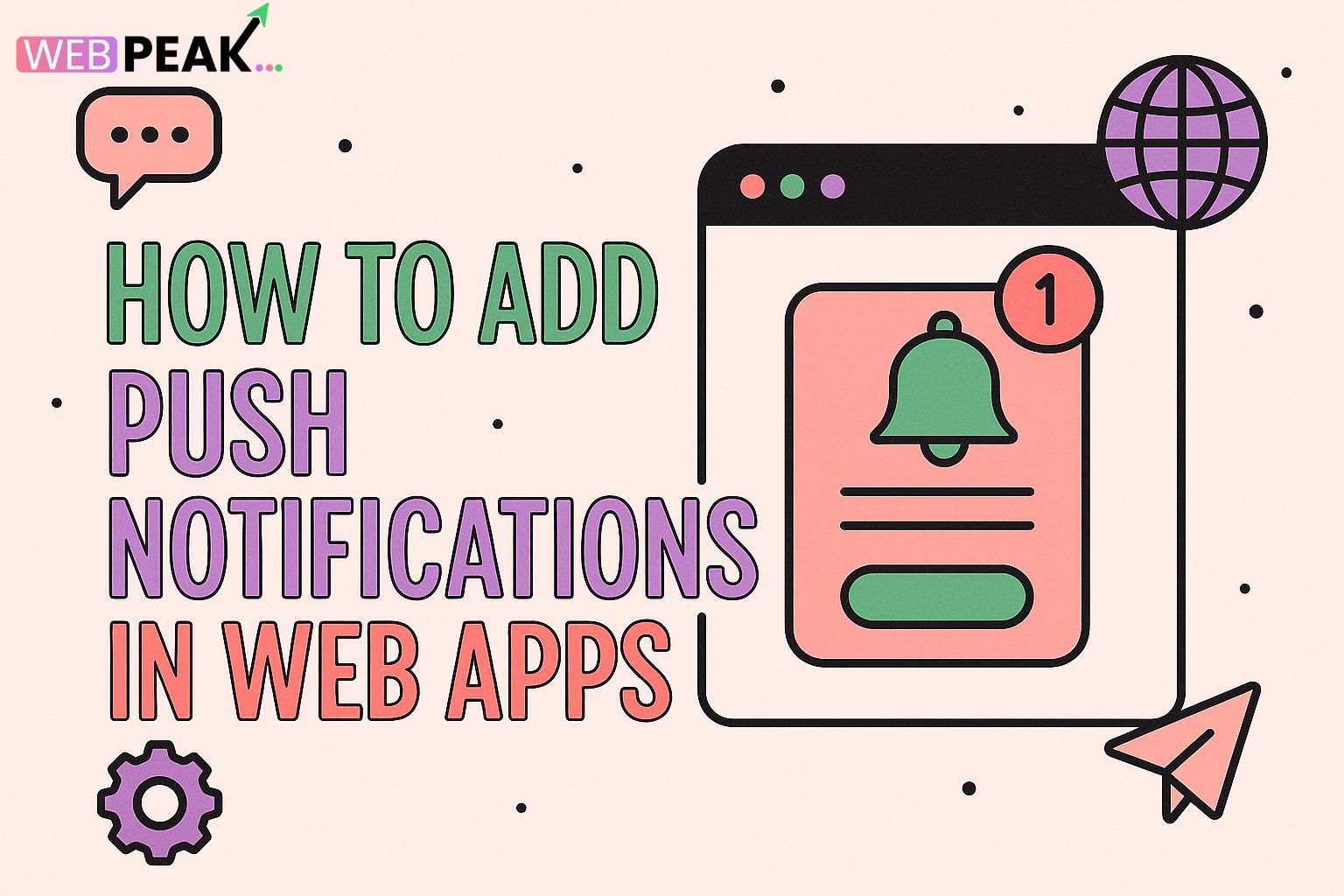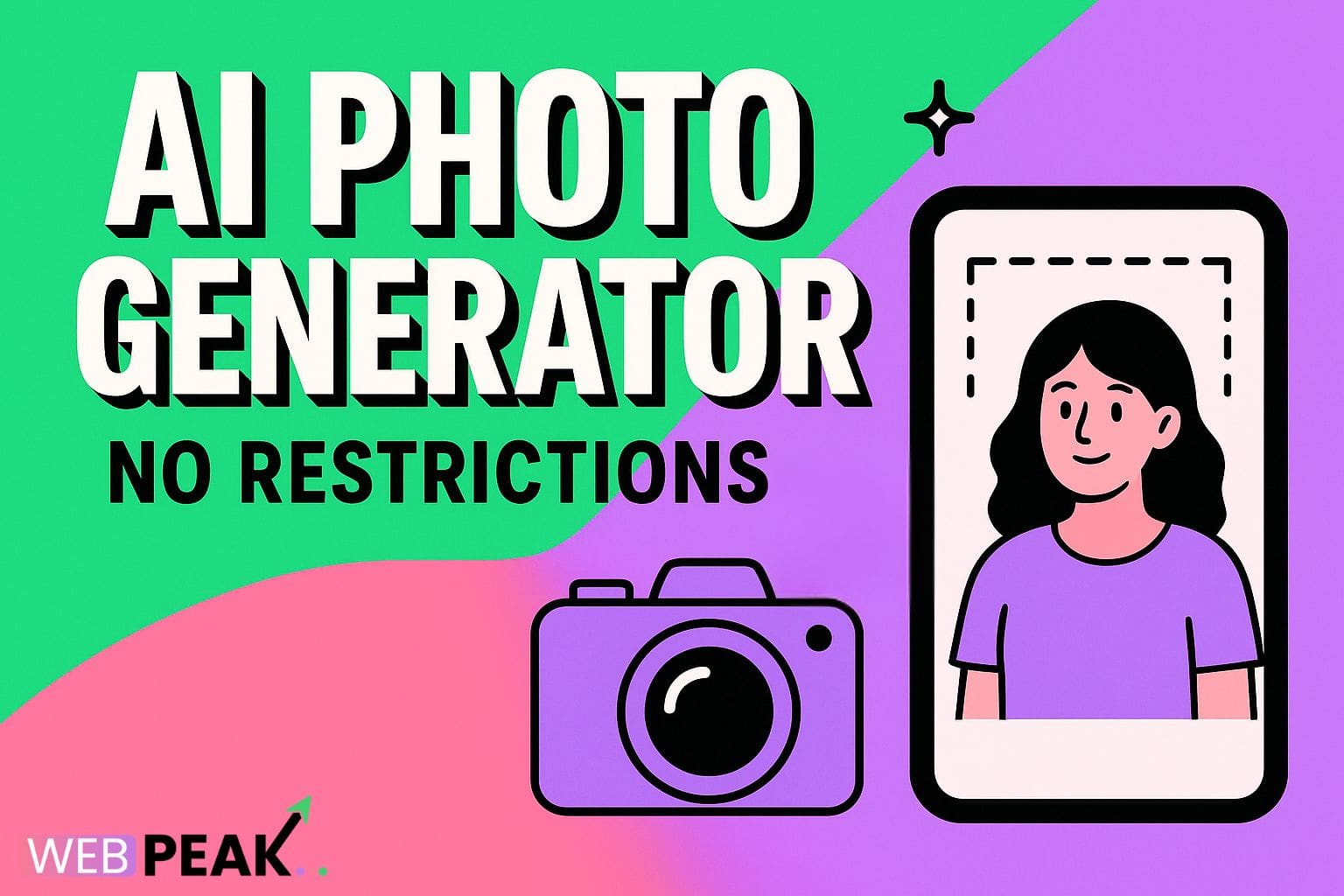How to Add Push Notifications in Web Apps
Push notifications have become a vital tool for improving user engagement and retention in modern web applications. Whether you're building an eCommerce platform, a social app, or a content-based website, integrating push notifications allows you to deliver real-time updates directly to users’ devices. In this comprehensive guide, we’ll walk you through how to add push notifications in web apps, including setup steps, best practices, SEO considerations, and frequently asked questions.
What Are Push Notifications in Web Apps?
Push notifications are messages sent from a web application to a user’s browser or device, even when the app isn’t open. These notifications can be used to alert users about new messages, promotions, reminders, or updates. They work through a browser’s Push API and Service Workers to deliver timely, engaging content that keeps users coming back.
Unlike email or SMS, push notifications are instant and permission-based, giving users full control over what they receive while offering businesses a powerful engagement tool.
Benefits of Adding Push Notifications to Web Apps
- Increase User Engagement: Notifications help bring users back to your website, increasing retention and activity rates.
- Real-Time Updates: Deliver breaking news, special offers, or reminders instantly.
- Personalized Experiences: Use targeted notifications to tailor messages based on user behavior.
- Higher Conversion Rates: Push notifications can drive sales by promoting time-sensitive offers.
- Enhanced Communication: Keep users informed without relying on emails or external platforms.
How Push Notifications Work in Web Applications
Push notifications operate through three key components:
1. Service Workers
A Service Worker is a background script that runs independently of your web page. It manages push events and displays notifications even when the user is not actively browsing your site.
2. Push API
The Push API allows a web app to subscribe users to push notifications. Once subscribed, your server can send messages to the user via the push service associated with their browser.
3. Notifications API
The Notifications API is used to display the actual notification message to the user. It defines how the notification appears, including its title, message, icon, and actions.
Step-by-Step Guide: How to Add Push Notifications in Web Apps
Now, let’s go step by step through the process of adding push notifications to your web application.
Step 1: Set Up HTTPS
Push notifications require your website to run on HTTPS because Service Workers need a secure environment. If your app isn’t already using SSL, you can get a free SSL certificate from Let’s Encrypt or purchase one from a trusted provider.
Step 2: Register a Service Worker
Create a JavaScript file named service-worker.js in your project root. Then register it in your main script:
if ('serviceWorker' in navigator) {
navigator.serviceWorker.register('/service-worker.js')
.then(function(registration) {
console.log('Service Worker registered:', registration);
})
.catch(function(error) {
console.log('Service Worker registration failed:', error);
});
}
Step 3: Ask for Notification Permission
Next, ask the user for permission to send notifications. This step is required by browsers for privacy reasons:
Notification.requestPermission().then(function(permission) {
if (permission === 'granted') {
console.log('Notification permission granted.');
} else {
console.log('Permission denied.');
}
});
Step 4: Subscribe Users to Push Notifications
Once permission is granted, use the PushManager interface to subscribe users. You’ll need a VAPID key pair to authenticate your push service. You can generate it using libraries like web-push in Node.js.
registration.pushManager.subscribe({
userVisibleOnly: true,
applicationServerKey: 'YOUR_VAPID_PUBLIC_KEY'
}).then(function(subscription) {
console.log('User subscribed:', JSON.stringify(subscription));
});
Step 5: Send Push Notifications from Your Server
After subscription, store the user’s subscription details in your database. Then use a server-side script to send notifications. For example, with Node.js:
const webpush = require('web-push');
webpush.setVapidDetails(
'mailto:you@example.com',
process.env.PUBLIC_VAPID_KEY,
process.env.PRIVATE_VAPID_KEY
);
webpush.sendNotification(subscription, JSON.stringify({
title: 'Hello!',
body: 'You have a new message!',
icon: '/images/icon.png'
}));
Step 6: Display Notifications in the Service Worker
Handle incoming push messages in your service-worker.js file:
self.addEventListener('push', function(event) {
const data = event.data.json();
self.registration.showNotification(data.title, {
body: data.body,
icon: data.icon
});
});
Best Practices for Using Web Push Notifications
- Be selective: Don’t send too many notifications; overuse can lead to users disabling them.
- Use personalization: Tailor notifications to user interests or activity history.
- Timing is key: Send notifications when users are most likely to engage.
- Include clear CTAs: Make it easy for users to act immediately.
- Track performance: Use analytics to monitor open and engagement rates.
Push Notification Tools and Platforms
If you prefer not to handle the technical setup yourself, several third-party services can simplify push notification integration:
- Firebase Cloud Messaging (FCM): A free service by Google supporting multiple platforms.
- OneSignal: Offers a user-friendly dashboard for managing notifications and analytics.
- PushEngage: Ideal for eCommerce and content websites with automation features.
- AWS SNS: Scalable notification service integrated with AWS infrastructure.
SEO and User Experience Considerations
Push notifications not only enhance engagement but can also indirectly support your SEO efforts. Search engines like Google prioritize sites with strong user engagement and return visits. Here are some SEO-friendly strategies to follow:
SEO Checklist for Push Notifications
- Ensure HTTPS is enabled for trust and SEO ranking.
- Keep notifications relevant and aligned with user intent.
- Avoid spammy or intrusive notifications that hurt user trust.
- Track user behavior to refine your notification strategy.
- Test notification formats and timing for optimal engagement.
- Maintain fast load speeds — push scripts shouldn’t slow your app.
Common Use Cases for Web Push Notifications
- eCommerce: Notify customers about new arrivals, flash sales, or cart reminders.
- News Websites: Deliver breaking news or trending stories instantly.
- Education Platforms: Send course updates, assignment deadlines, or live class reminders.
- Social Media Apps: Alert users of new messages, likes, or followers.
- Finance and Banking Apps: Notify about account activity, payments, or alerts.
Security and Privacy Considerations
Push notifications involve handling user data and permissions, so it’s essential to follow strict security and privacy standards:
- Always use HTTPS for communication.
- Store minimal user data — only subscription information.
- Provide clear opt-in and opt-out options.
- Respect user privacy and comply with GDPR or local data protection laws.
Integrate Push Notifications into Your Marketing Strategy
Beyond the technical setup, integrating push notifications into your overall marketing plan can amplify results. Combine push notifications with email marketing, SEO, and social media strategies to create a holistic engagement approach. Regularly evaluate performance metrics such as click-through rates and conversions to refine your campaigns.
Conclusion
Adding push notifications in web apps is one of the most effective ways to enhance user engagement, retention, and conversions. By following the right technical steps and applying best practices, you can ensure your notifications deliver value to users without becoming intrusive. Whether you’re building a new web app or improving an existing one, push notifications can significantly boost your reach and interaction rates.
If you’re looking to develop or optimize a modern web application with integrated push notifications and marketing automation, consider partnering with WEBPEAK, a full-service digital marketing company providing Web Development, SEO, and Digital Marketing services to help your business grow online.
Frequently Asked Questions (FAQ)
1. What are push notifications in web apps?
Push notifications are alerts sent from a web app to a user’s device or browser, even when the app isn’t open. They’re used to inform, engage, and retain users.
2. Do I need HTTPS to use push notifications?
Yes. Most browsers require HTTPS for push notifications to ensure secure communication and protect user privacy.
3. Can push notifications improve SEO?
Indirectly, yes. Engaged users who return frequently signal to search engines that your site offers value, which can positively impact SEO performance.
4. How can I manage user permissions for notifications?
Always request permission explicitly and allow users to opt out easily through browser settings or your app’s interface.
5. Which browsers support web push notifications?
Most major browsers like Chrome, Firefox, Edge, and Safari support web push notifications, though support may vary on mobile devices.
6. What is the difference between web and mobile push notifications?
Web push notifications are delivered via browsers, while mobile push notifications are sent through mobile apps installed on a device.
7. Are push notifications free to implement?
Yes, you can build them for free using tools like Firebase Cloud Messaging (FCM). However, some premium platforms offer advanced analytics and automation for a fee.
8. How do I measure the success of my notifications?
Track metrics such as delivery rates, click-through rates, and user engagement to measure performance and optimize your strategy.





